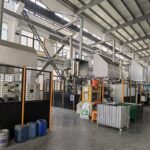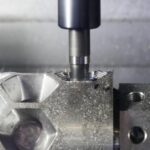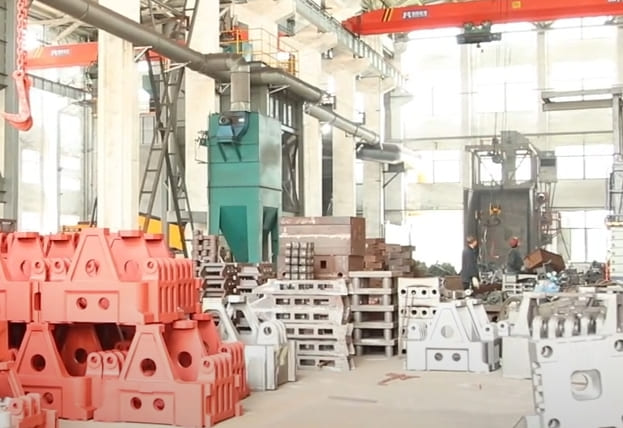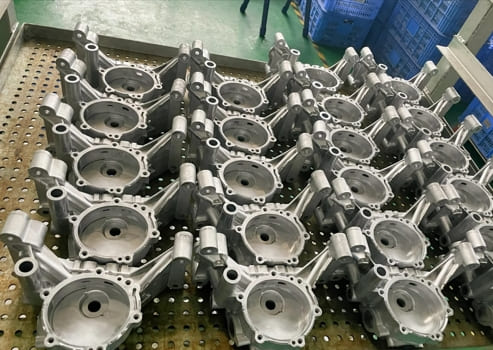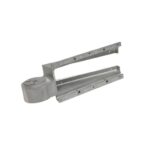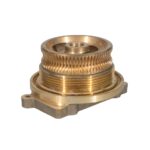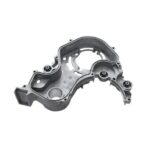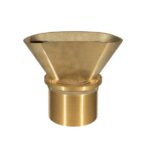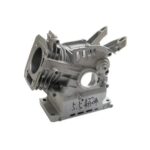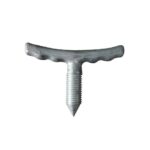As a manufacturer with over 20 years of hands-on experience in aluminum die casting, I’ve seen how something as simple as a drawer slide housing can make or break a cabinet’s functionality. Buyers often focus on surface finishes or slide mechanisms, but the real strength lies in what supports the slide system—the housing.
We supply drawer slide housings to several cabinet hardware brands across Europe and North America, and I can confidently say: when it comes to precision, durability, and reliability in kitchens, aluminum die-cast housings outperform other materials in every critical area. This article explains why—and how we manufacture them to meet exacting standards.
What Are Drawer Slide Housings and Why Do They Matter?
Drawer slide housings are the structural shells that hold the sliding mechanism in place, absorbing stress from opening and closing cycles.
They anchor the drawer runners and help maintain stability, alignment, and overall performance. In soft-close or concealed slide systems, even a small distortion in the housing can cause noise, friction, or total failure. This is why we treat these components with the same precision as we would a mechanical bracket or engine cover.
Why Aluminum Die Casting Is Ideal for Drawer Slide Components
Aluminum die casting provides the strength, shape complexity, and finish quality that drawer slide systems demand—especially in modern kitchen environments.
High Strength with Lightweight Performance
Aluminum has an excellent strength-to-weight ratio. A typical die-cast housing made from ADC12 or A380 supports up to 40 kg of load in testing, while weighing less than 120g. This lightness allows smoother motion without compromising durability.
Tight Dimensional Tolerances for Smooth Movement
Our die casting process allows tolerance control down to ±0.05 mm—or ±0.01 mm with post-machining. That’s critical for hidden slides or push-to-open systems where even 0.1 mm of misalignment affects performance.
Excellent Corrosion Resistance for Kitchen Use
Kitchens are humid and often exposed to cleaning agents. Aluminum die casting naturally resists corrosion, and we often apply an additional clear anodizing or powder coating to enhance durability over 5–8 years of use.
Flexible Design Options for Complex Shapes
Die casting allows us to mold in undercuts, guiding rails, and screw holes directly—no need for post-welding or added plastic clips. This lowers the risk of part failure during long-term use.
Comparison Table – Aluminum Die-Cast vs. Other Materials
Drawer slide housings can be made from plastics or stamped steel, but both come with limitations in high-use environments.
| Feature | Plastic Housing | Steel Stamped Housing | Aluminum Die-Cast Housing |
|---|---|---|---|
| Structural Strength | Low (brittle over time) | High, but adds weight | High with lower weight |
| Corrosion Resistance | Moderate | Poor (rust-prone) | Excellent |
| Dimensional Accuracy | Susceptible to warping | Sharp bends, risk of misalignment | Very consistent |
| Noise Reduction | Prone to creaks | Rattles if unbalanced | Stable and silent |
| Finish & Aesthetics | Dull or bulky | Visible seams | Smooth, paint-ready |
| Cost Over 5-Year Lifecycle | Low upfront | Medium maintenance | Lower total cost |
How Our Factory Produces Precision Die-Cast Drawer Slide Housings
Our factory specializes in high-precision, medium-volume production runs. We work with clients ranging from luxury cabinet brands to OEM hardware producers, offering both standard and custom geometries.
Materials Used
We most often use ADC12 and A380 aluminum alloys, chosen for their strength, flowability, and stability. For certain customers, we also produce in B390 when additional wear resistance is required.
Tooling & Mold Design
All molds are 100% custom-built with simulation software to predict metal flow and avoid air entrapment or shrinkage. Most clients receive their first T1 samples within 30–40 days of PO confirmation.
CNC + Surface Treatments
We machine critical surfaces to ±0.01 mm and apply finishing treatments such as:
- Clear anodizing (salt spray tested up to 500 hours)
- Textured powder coating
- Chromate passivation for electrical conductivity
Quality Control Measures
Each housing passes dimensional checks, and key functional points (mounting holes, rails) are measured using CMM. We provide inspection reports per batch, and for long-term clients, we keep mold maintenance logs available on request.
Real-World Application: A Cabinet Brand Success Story
One of our European clients—a kitchen system supplier—came to us after dealing with a 3% return rate due to deformed steel housings. Their slides were jamming after 6–8 months in high-humidity homes.
We redesigned the housing with aluminum die casting, adding support ribs and switching to a two-point screw anchor. Their defect rate dropped to under 0.3%, and end-user complaints disappeared. The client scaled the solution across their entire product line, resulting in a 15% year-over-year growth in their slide hardware sales.
Ordering Aluminum Die-Cast Drawer Slide Housings: What You Should Know
We work with both high-volume and specialty customers. Here’s what you can expect when sourcing from us:
- MOQ: 500 pcs per mold configuration; lower for prototypes
- Tooling Lead Time: 4–6 weeks, depending on complexity
- Delivery: 25–35 days after sample approval
- Customization: Fully supported—logos, slot angles, thread inserts
- Supported Systems: Undermount, ball-bearing, push-open, and soft-close drawer slides
We’re not just a manufacturer—we’re a long-term production partner focused on precision and performance.
Looking for precision aluminum die-cast drawer slide housings?
Drawer slide housings may be hidden from view, but they’re foundational to a smooth, long-lasting kitchen experience. We’ve helped over 100 clients improve reliability and reduce warranty claims by switching to aluminum die casting.
Contact us at yongzhucasting@gmail.com.
We’ll review your drawings and return a quote with DFM support within 24 hours.



